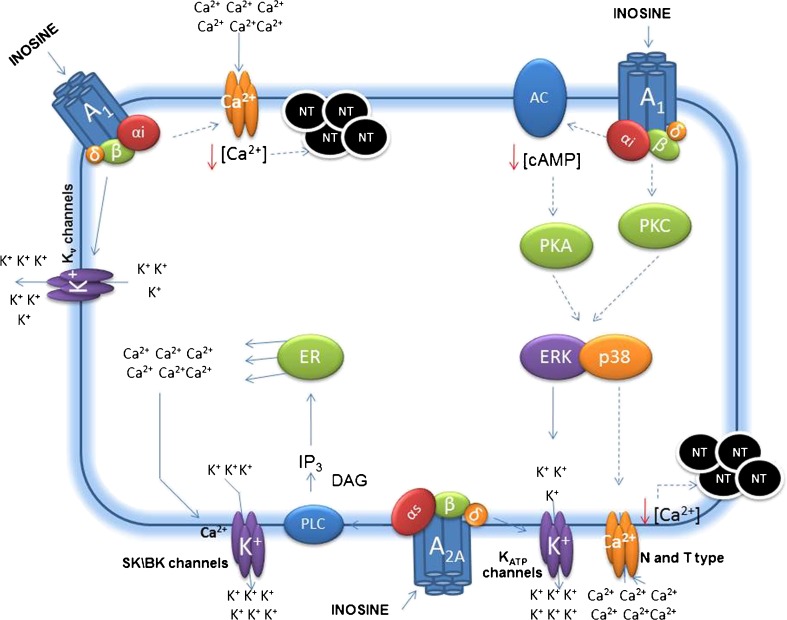Fig. 4.
Probable intracellular mechanisms involved in the inosine effect, from receptor interaction through modulation of ion channels. The continuous arrow indicates activation, and the dot arrow indicates inhibition. A1 (A1 Adenosine receptor); A2A (A2A Adenosine receptor); αi, αs, β, and δ (G-protein subunits); Kv channels (voltage-dependent potassium channels); SK/BK channels (small- and large-conductance Ca2+-activated potassium channels); KATP channels (ATP-sensitive potassium channels); N and T types (N and T voltage-dependent calcium channels); AC (adenylate cyclase); PLC (phospholipase C); cAMP (cyclic adenosine monophosphate); IP3 (inositol triphosphate); DAG (diacylglycerol); PKA (protein kinase A); PKC (protein kinase C); ERK and p38 (mitogen-activate protein kinases); ER (endoplasmic reticulum); K+ (potassium ion); Ca2+ (calcium ion); and NT (neurotransmitter)

